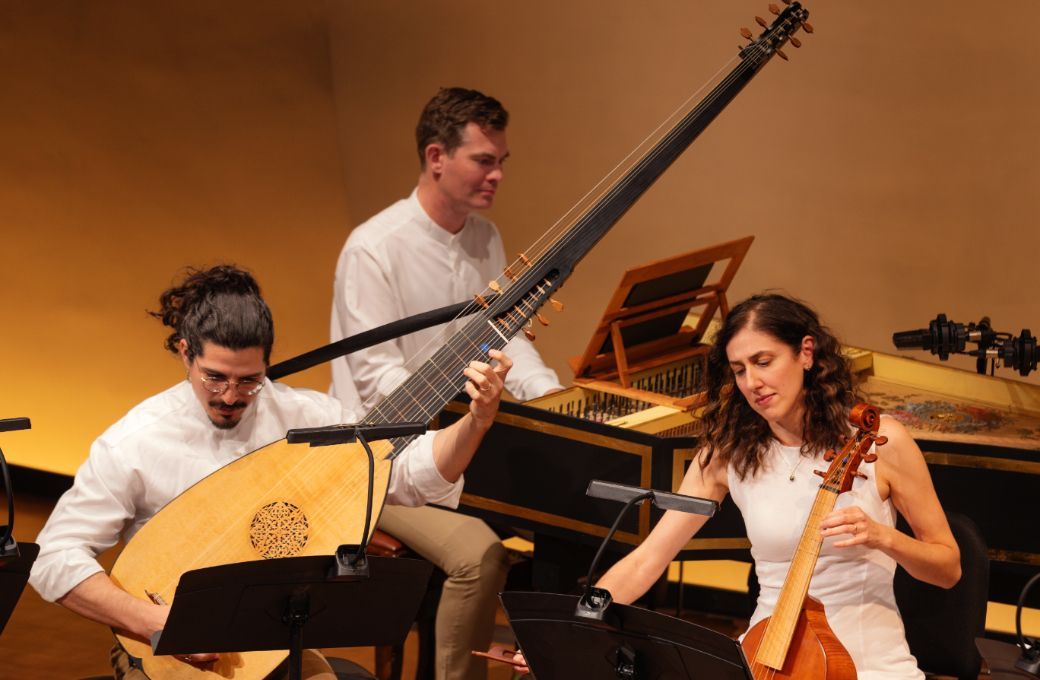This was an evening of firsts at The Frick Collection on Manhattan’s Upper East Side. It was the first concert of Sonnambula’s season and of their residency at the Frick. It was also one of the first concerts of the inaugural season in the museum’s new 218-seat Stephen A Schwarzman Auditorium, created during the recent renovation of the 1912 building.
Sonnambula was joined by the magnificent bass-baritone Davóne Tines in a performance of A Black Masque, a realization of Ben Jonson’s lost 1605 court entertainment Masque of Blackness. While Johnson’s text – about nymphs from Africa pursuing a new life and lighter skin in England – has survived, the music for all but one of the songs (that one composed by Alfonso Ferrabosco II) has not. Tines and Sonnambula artistic director Elizabeth Weinfield rebuilt the piece from the ground up, repurposing other compositions by Ferrabosco as well as some of his contemporaries, including William Brade, William Byrd, John Coprario and John Dowland. They also folded in griot stories, no doubt more appropriate for the Ethiopian characters than anything in the original, and a subtext involving the original production, which featured Queen Anne of Denmark as part of a cast performing in blackface.

Tines was nearly in the role of narrator, even lecturer (albeit one with an authoritatively mellifluous voice) for much of the hour. The quintet, performing on viol, viol da gamba, theorbo and harpsichord, entered first, dressed in white. Tines appeared at the back of the theatre, descended to the floor, took a glass cover from a small display case and removed some papers or parchments. He read from the pages descriptions of the intended staging and the mythology of the storyline, and of the racialized costuming. His delivery, almost needless to say, hewed as closely to the period as the ensemble's instruments, with the lilt and bounce of a stage troubadour, a 17th-century musical storyteller. He set the context of the tale on the table and left it there for all to see. The original work could have been modernized, sanitized, demonized or otherwise destroyed but this wasn’t the objective. It didn't need to be changed, only described. The African otherness woven throughout was laid bare without comment.
But of course, Tines sang as well. A beautiful ballad near the end began with the suggestion of a double echo before the viols moved to the sides of the room, stepping away from the tasteful amplification and making full use of the room’s warm acoustics, simulating the loneliness of an empty night. “Oh why does love make two kind hearts sever?” he sang, imploringly. It was a high point of the production.
The artistic practice Tines pursues contains an element of activism, to be certain, but his work is to explore history, not to tear it up. It's not revisionist, it's illuminative. He shines a light while retaining a measure of respect for antiquity and a trust in his audience to let him go there, if not go there with him. He leaves our collective culture a better place than he found it.


